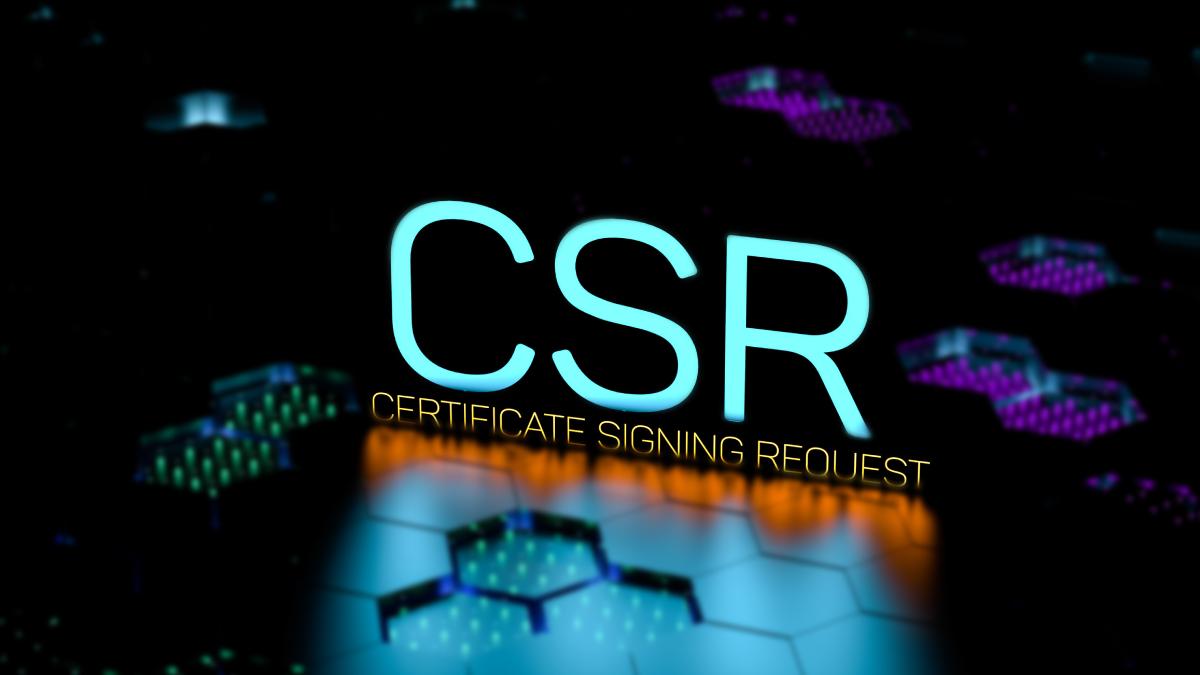Obtaining a digital certificate is impossible without first generating a certificate signing request (CSR). The steps required to generate a CSR, while crucial, are often overlooked by IT teams and can be prone to errors and inefficiencies, despite not being particularly complex. The risks of getting CSRs wrong may adversely affect the process of obtaining digital certificates in general, from delays and rejected requests to opening avenues for certificate misuse.
The challenges with CSRs echo the challenges enterprises have with PKI management more broadly. At large organizations, teams are often tasked with keeping track of, obtaining, renewing, and retiring hundreds if not thousands of digital certificates per lifecycle. The possibilities of human error, something slipping through the cracks, and the cascade of delays that follow rise with the complexity of a scaling PKI infrastructure. Organizations should leverage a certificate management tool to streamline, simplify, and automate CSR workflows, strengthening the efficiency and security of their whole PKI ecosystem.
Table of Contents
ToggleWhat is a CSR?
A certificate signing request is an encrypted data file required by certificate authorities (CAs) for the issuance of digital certificates. It contains several pieces of identifying information about the intended certificate recipient and the public key from the corresponding private-public key pair.
Several fields are commonly included in a CSR that must contain accurate information about the certificate owner, such as Common Name (CN), Organization Name (ON), Organizational Unit (OU), and location details. Subject Alternative Name (SAN) is a field that allows a certificate recipient to specify additional host names to be covered under a single certificate, rather than only using the CN. Inclusion of SAN is rapidly becoming the industry standard.
CSRs are a building block of every public key infrastructure (PKI), whether they get the attention they deserve or not. Generating CSRs kickstarts the process of obtaining correctly issued and configured digital certificates, which, in turn, form the backbone of digital trust and consumer confidence.

How to Generate a CSR Step-by-Step
The process of generating a certificate signing request is generally standard within an organization, following the same steps that may only differ slightly for different digital certificates or the certificate authorities they’re being requested from.
Step One: Prepare the key pair
Choosing the encryption type and key length for the key pair is a crucial first step. It directly influences the level of security for the certificate, as the key type and size will determine the strength of the encryption the key pair will have.
The most popular cryptographic algorithms for key pairs are RSA, DSA, and ECC. The length of 2048 bits is the common standard for RSA; however, stronger 3072-bit, 4096-bit, and even 7168-bit keys are now becoming an option. The caveat to keep in mind is that lengthier keys take longer to validate and may impact website performance in favour of stronger security.
Step Two: Create the CSR
A common way to create the certificate signing request itself is to use the OpenSSL software library, a robust and free open-source toolkit for cryptography and secure communication. Alternatively, an organization might also have a PKI solution in place and can use the platform-specific tools to create the CSR.
Step Three: Check the requirements
It’s important to validate all the information provided in the CSR, making sure it matches the organizational requirements. From standard to extended validity digital certificates, there are different types suited for various sectors and organization types. Additionally, certificate authorities may require more rigorous checks and information in the CSR depending on the type they’re asked to issue, so it is imperative to know this before submitting.
Step Four: Submit the CSR
The final step is to submit the CSR to a certificate authority (CA). Choosing a reputable one that issues the certificate types required by the organization, as well as provides an adequate level of trust and support, ensures a smooth experience not just for CSR reviews, but certificate issuance in general.
Common CSR Generation Pitfalls to Avoid
As outlined above, generating CSRs is straightforward and can be standardized. The repeatable nature of the process lends itself well to optimization, increased efficiency, and accuracy. Yet, many IT teams still struggle with generating CSRs the right way, often through no fault of their own. Gaps in organizational policies, overreliance on manual work over automation, and staffing issues may all lead to haphazard CSR generation prone to errors and security risks. Some common pitfalls include:
- Selecting weak or deprecated algorithms whose specifications aren’t a match for the current certificate lifecycle requirements and standards.
- Misconfigured SAN fields listing incorrect or incomplete alternative host names, leading to rejected certificates.
- Other manual errors that cause delays in certificate issuance and potentially outages due to certificate expiry.
- Losing track of the private keys tied to generated CSRs, rendering the certificates unusable or a security risk.
To counteract these pitfalls and eliminate the ad-hoc nature of CSR generation, organizations should leverage PKI solutions and certificate management tools that can ensure the smooth functioning of the certificate generation process from start to finish.
The Role of Certificate Management Tools
Certificate management tools are indispensable at an enterprise level, where the volume of digital certificates in use and thus the frequency of generating CSRs for issuance and renewal can reach thousands per certificate lifecycle. Certificate management tools can automate CSR generation across diverse environments, ensuring that no asset slips through the cracks to cause an outage or a lapse in security.
By standardizing templates for CSRs, management tools deliver request consistency and accuracy, reducing certificate issuance time and minimizing the potential for rejected certificates, repeat applications, and delays. Certificate management tools for enterprises integrate with PKI and CA workflows for a controlled, smooth, and repeatable process with full visibility. Lower instances of certificate misissuance and a more effective enforcement of organizational policy regarding certificates (e.g., key size, algorithm, validity periods) usually result.
Best Practices for IT Leaders
While there is no one-size-fits-all CSR process that matches the needs and requirements of every conceivable organization in existence, several best practices for handling CSR generation have emerged alongside the rapid rise in demand for robust and well-managed PKI infrastructure. They include:
- Establishing a centralized process for CSR generation and certificate requests to avoid human error and the vulnerabilities of an ad-hoc approach
- Educating teams on minimum security standards for cryptographic keys and revisiting the organization’s security requirements as its IT infrastructure scales
- Integrating CSR workflows into DevOps pipelines for agility and scale, which is indispensable for larger enterprises
- Regularly monitoring and auditing all issued certificates for compliance.
Conclusion
Certificate signing requests, or CSRs, are a critical but often overlooked first step in certificate issuance; a CSR provides a certificate authority with all the information and verification required to issue a digital certificate to an organization. The process of generating CSRs usually differs little from certificate to certificate, but many organizations still perform them manually instead of standardizing and automating the steps.
The pitfalls of manual handling of CSR generation not only include security risks, but also delays in certificate issuance and renewal that may impede operations. Certificate management tools are a powerful lever to reduce complexity and human error, and entrench CSR generation in an organization’s PKI workflow that is reliable, repeatable, and transparent.
Also Read: Wealth Management in India: The Rise of PMS Services
Shashi Teja
Related posts
Hot Topics
How Can You Lend Money Online to Generate a Parallel Income
Making additional revenue in today’s digital economy is easier than ever. Peer-to-peer lending services are becoming more and more popular….
Nai Taiyari.com: Your Go-To Platform for Tech Tips, Free Recharge Tricks, and Digital Learning
I stumbled across nai taiyari.com while hunting for practical tech tricks that actually work, and honestly? It’s become one of…



